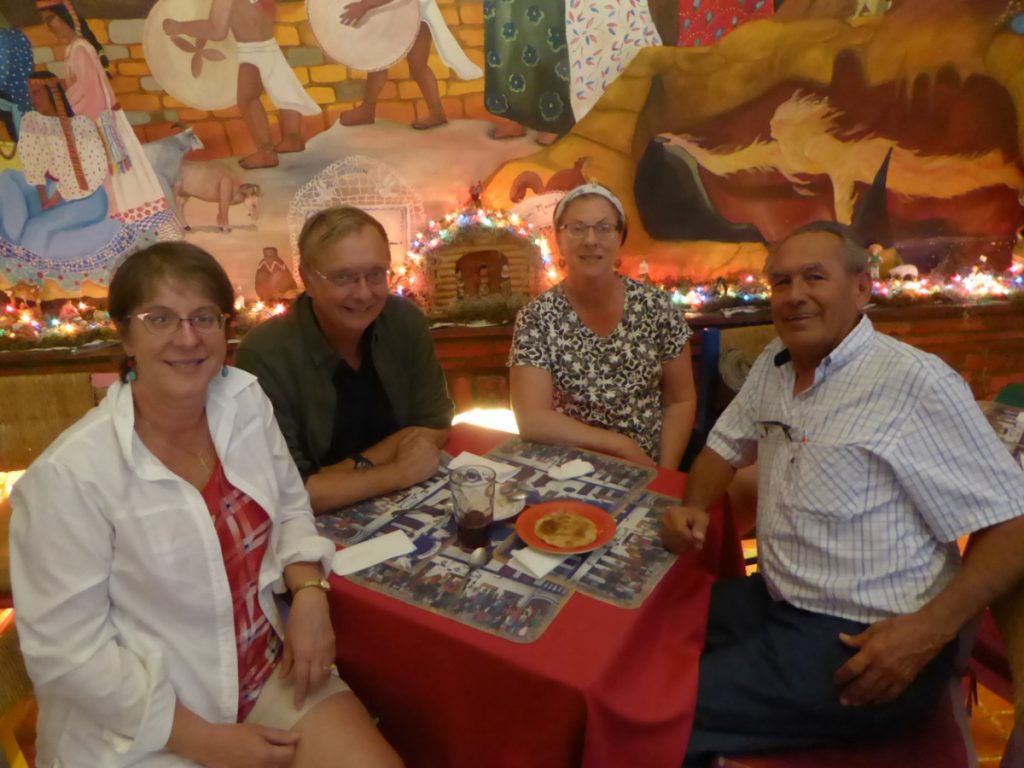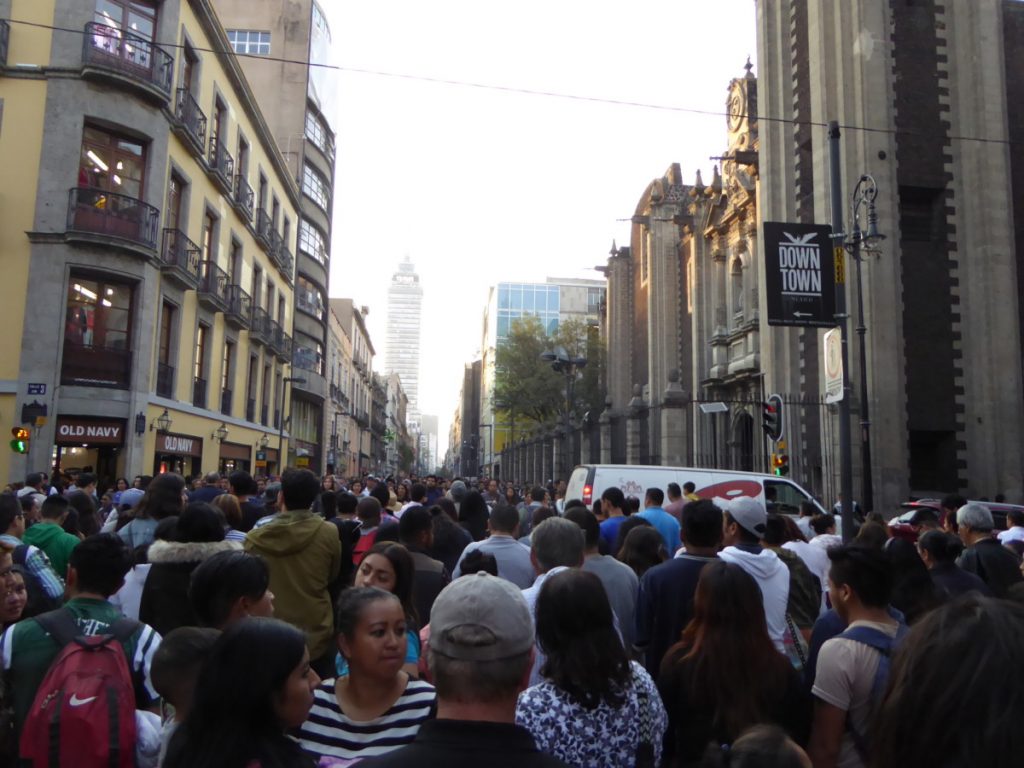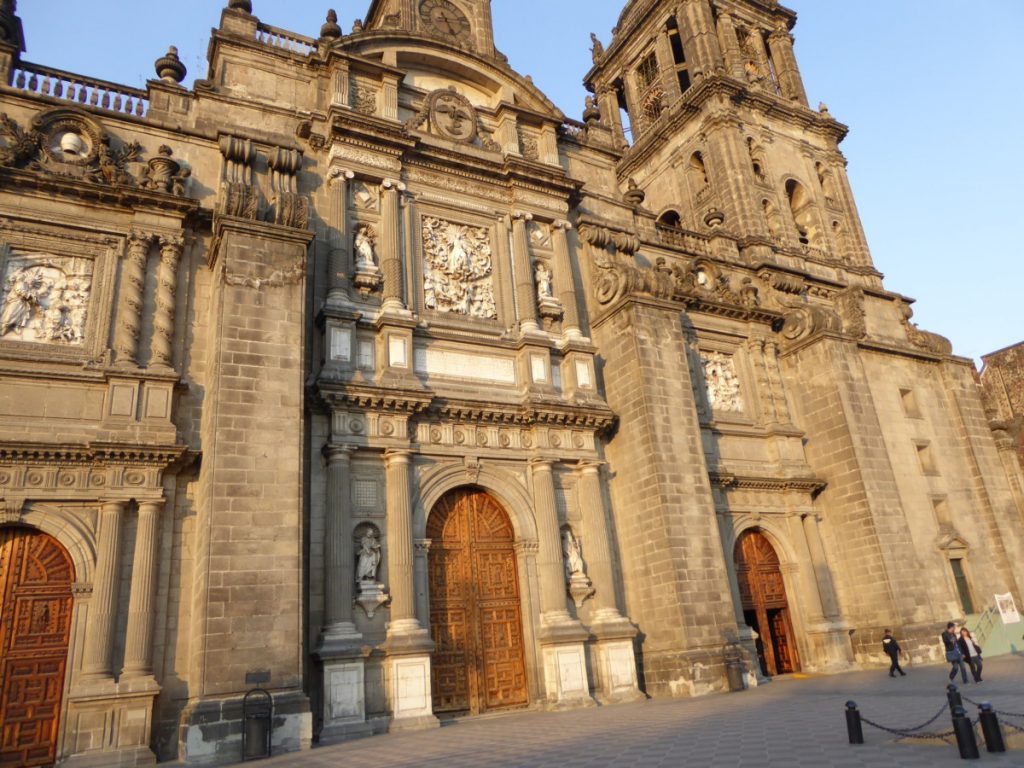December 20th
Alberto loaned us his car for the day so we could explore the city further. We started out with a visit to the famous Tectihoucan archeological site to see the pyramids. It was a gritty 2 hour drive through miles of urban sprawl. The population of Mexico City exploded since World War II – from 3 or 4 million to over 20 million in the great metropolitan area – and it shows. The street vendors are everywhere, even on the side of the highways trying to sell you all kinds of crap – stuffed animals, jewelry, food and window washing services. There would be rest stops of a sort with 40 food stands lined up on both sides of the road. Also lots of car repair places each one specializing in a certain service – brakes, transmissions etc.
We reached our destination before it got hot and crowded. Teotihuacan is an ancient Mesoamerican city located 25 miles northeast of modern-day Mexico City, and contains architecturally significant pyramids built in the pre-Columbian Americas. The city was established around 100 BC continuously under construction until about 250 AD. At its zenith, Teotihuacan was the largest city in the pre-Columbian Americas, with a population estimated at 125,000 or more. The city may have lasted until sometime between the 7th and 8th centuries AD, but its major monuments were sacked and systematically burned around 550 AD.
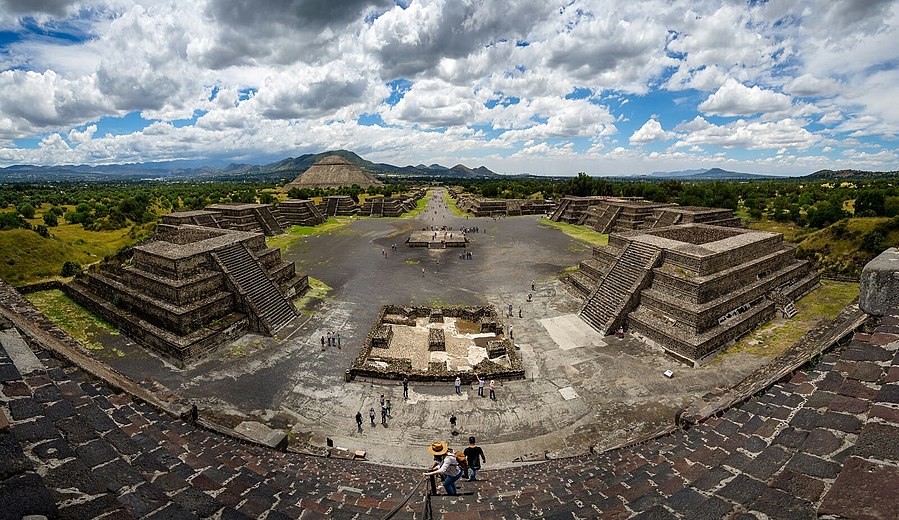
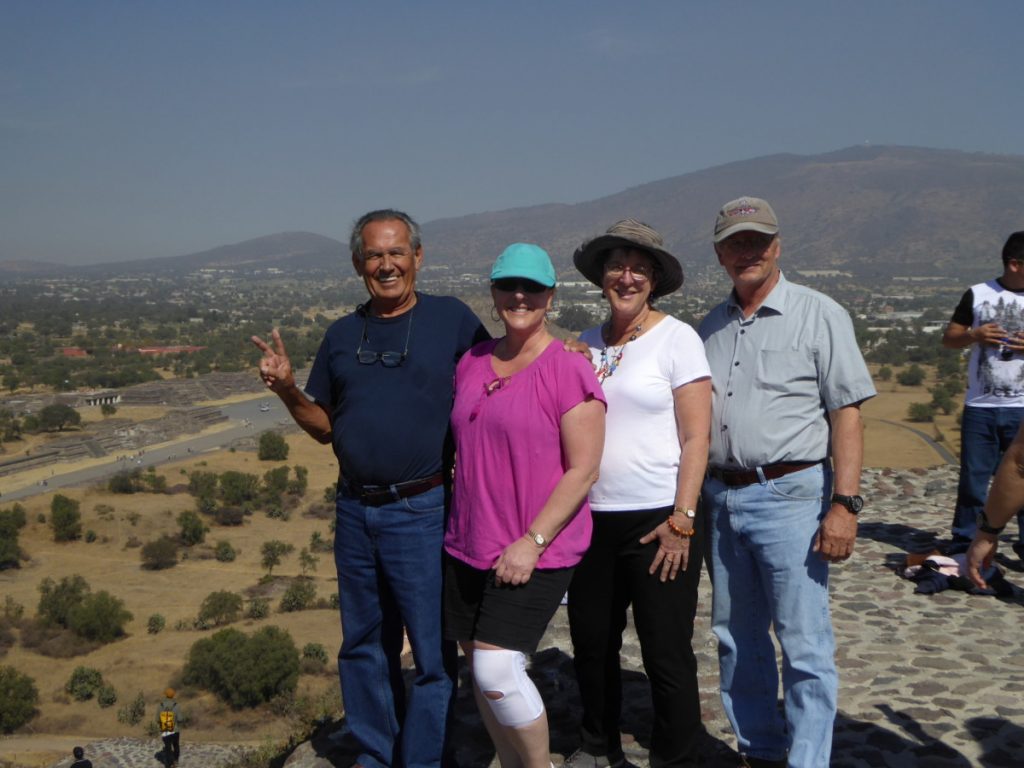
The site is large, covering 32 square miles and never felt crowded. We hiked the Pyramid of the Sun – a height of 60 meters. It was not an easy climb because the steps get quite steep as you get closer to the top. The views of the site were impressive and worth the climb. But the smog of Mexico City was very visible even 25 miles away.
Our reward for the walking and climbing was lunch at La Gruta, a fine dining restaurant located inside a massive cave. The place was colorful and decorated for the holidays with poinsettias, a nativity and lots of Christmas lights. We tried ant larvae for an appetizer (meh), a mushroom and cactus soup (yum) and some other traditional dishes. I’d vote that this place had the worst margaritas – they were some frozen concoction! The tortillas were freshly made at a station up above the dining area. A great ambience.
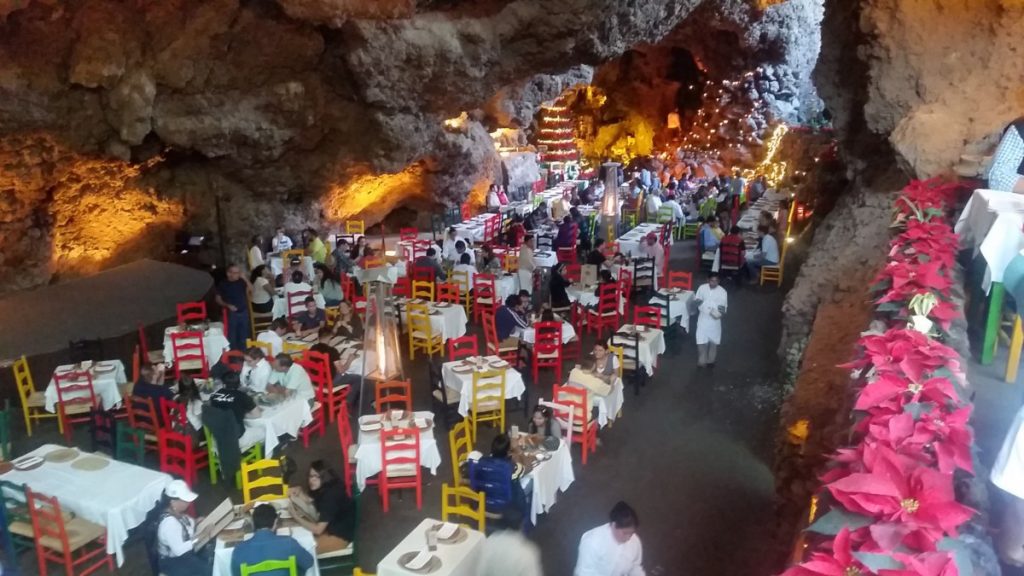
The day kept getting better. When we arrived back in the city, Max took us on a driving tour of the central district of Mexico City along the Paseo de la Reforma – the main thoroughfare which runs through the heart of the city. The avenue was modeled after the great boulevards of Europe in Vienna and Paris. It was built by the Austrian prince Maximillian who was Emperor of Mexico for a short 3 years. Its original name was Paseo de la Emperatriz, in honor of his wife Carlota. Following the defeat and execution of Maximiliano, the name of the avenue was changed to Reforma, in honor of the reforms carried out under President Benito Juarez.
Reforma is home to many monuments, museums, parks, mansions as well as modern skyscrapers and bustles with business activity and bumper-to-bumper traffic. I wish we had had time to rent bikes and explore this street – it would take a least a full day or maybe two to see everything. On Sundays, some stretches are closed to traffic. Next trip we’ll stay right downtown and see all the sights we missed on this quick trip. It wasn’t easy to get a decent picture to capture this street from the backseat of a moving car. This drone picture capture the essence of Paseo de Reforma.
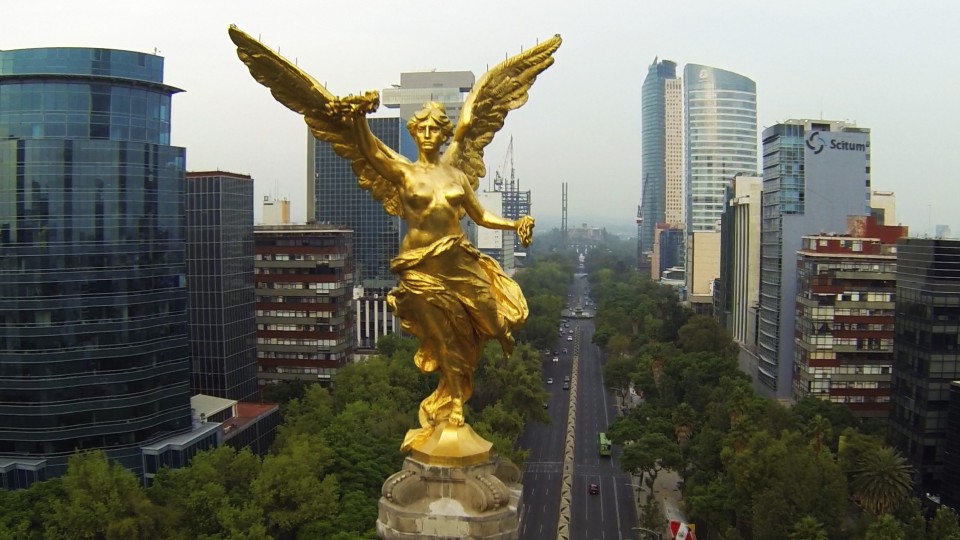
We parked downtown just as it was getting dark. Max and Lea had a surprise for us. They took us to the Gran Hotel, a classic hotel with Art Nouveau décor, where we snagged a table on the terrace of the fifth floor La Terraza Restaurant with panoramic views of the Zocalo, National Palace and the Metropolitan Cathedral. The plaza was filled with ice skaters and pedestrians and all of the buildings surrounding the plaza were decorated for Christmas. It was a treat.
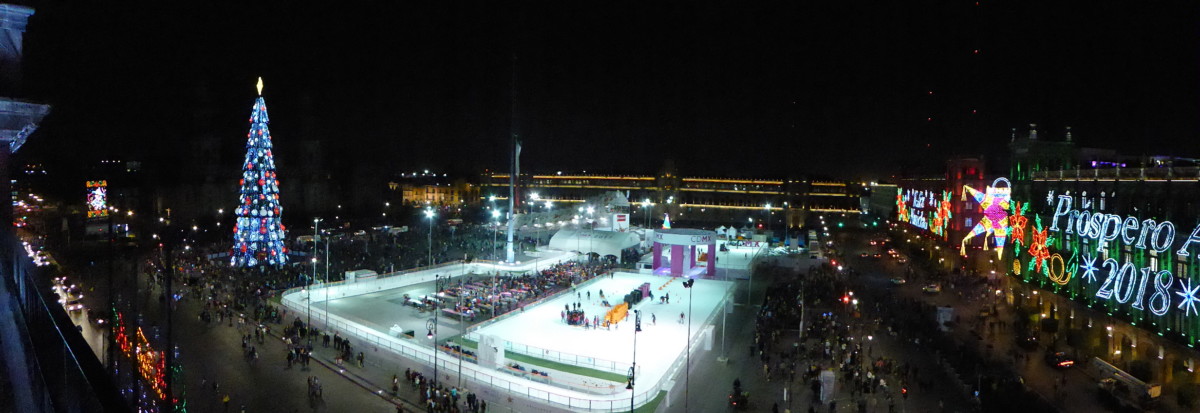
December 21st.
Thursday was an interesting day. We got a late morning start. We picked up the tourist hop-on hop-off bus in the Coyoacan square after snagging a Mexican latte at a corner coffee store that was roasting the beans on demand. We ended up back at the Zocalo (main square) and went on a hunt to find Max’s optical store. We were excited to buy new prescription glasses for $50 each. We piled into the shop and all four of us ordered glasses. It was a bit confusing with the language barrier and I was a little concerned that they wouldn’t get my complicated prescription right. Well at 7pm when we finally got our glasses, they forgot to put the shade in Bill’s sunglasses. Neither of my prescriptions were right and the girl couldn’t get mine to sit straight on my face. Max’s were the right prescription but he’d had an exam at this place last year. In the end we each got nice frames for $60 and we can get the right lenses back at home. It was a fun try but my recommendation is to bring your paper prescription and find a place where they speak English. Or just buy the frames.
We enjoyed perusing the shopping districts. I love how every country has stores that highlight what is important in their culture and how similar stores are grouped together. In Mexico City, there were blocks of optical and jewelry shops together and then formal dress stores had their own block.
We had lunch at Sanborns, a Mexican restaurant chain, which was founded in 1903 by two Californian brothers as a trendy hangout for expats and Mexican socialites. The buildings include restaurants, pharmacies and department stores now. They are sort of a Mexican Denny’s where the waitresses wear huge colorful dresses. Food was good enough and the margaritas better than La Gruta.
We ran out of time to see much in the way of museums in the city. The National Palace was closed for an official function. We had time to visit the Temple Mayor, an archeological exhibit right in the middle of the town. The museum showcased pyramids and a temple from the early Mexica tribes who built these structures just 200 years before the Spanish Conquest. The Aztecs had built their empire on Lake Texcoco – it was an island city similar to Venice. The Spaniards destroyed most of the temples and pyramids, drained the lakes and used the materials to build the colonial era buildings that now surround Zocola Square – the National Palace, the Cathedral and administrative buildings.
We rested for a while in the cathedral just as the afternoon mass was starting. The Metropolitan Cathedral of the Assumption of the Most Blessed Virgin Mary into Heaven is the largest cathedral in the Americas, and seat of the Roman Catholic Archdiocese of Mexico. It was built on top of the former Aztec sacred precinct near the Templo Mayor on the northern side of the Plaza de la Constitución in Downtown Mexico City. The construction took almost 300 years to complete (1525 to 1813) and includes a combination of Renaissance, Baroque and neoclassical architecture.
Back in Coyoacan we had dinner at a sweet little neighborhood restaurant called La Lupitas. Great atmosphere, cheap food and a nice end to a busy day.
